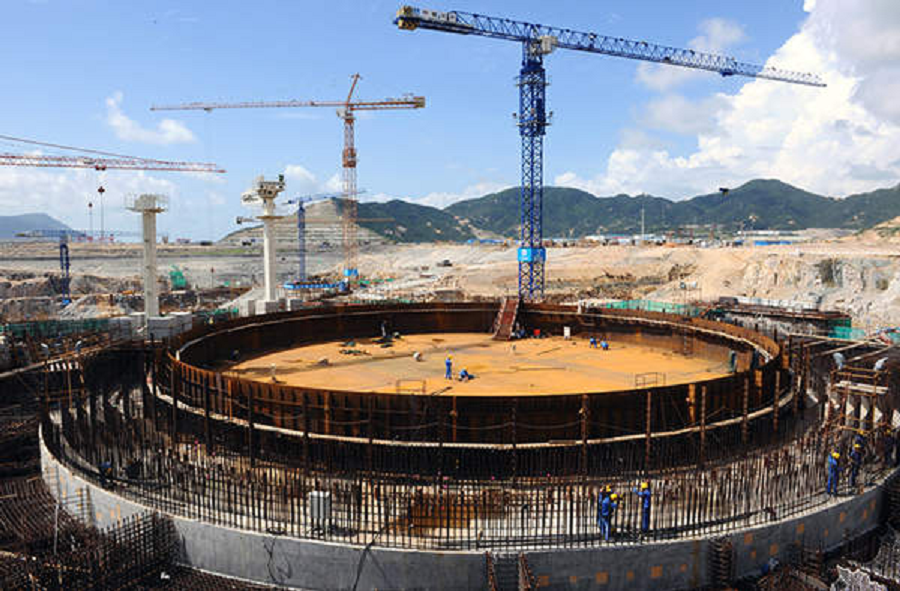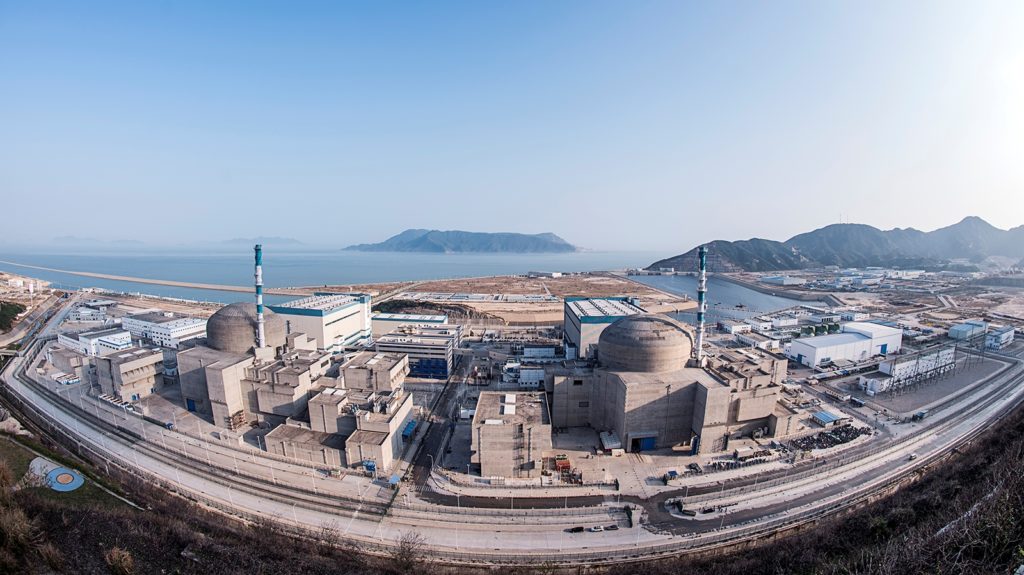As the Chinese nuclear incident unfolds, expert falls from building and dies
Chinese nuclear scientist Professor Zhang Zhijia fell from a building last week and died. Image: Harbin Engineering University
While the details of an ongoing incident at one of the world’s largest nuclear power plants are blurry at best, a leading Chinese nuclear scientist is dead after another suspicious event. Zhang Zhijian, former vice president of Harbin Engineering University, died Thursday after somehow “falling off a building.” fallen ”.
Days after China announced that five fuel rods at Taishan Nuclear Power Plant were damaged, one of China’s leading nuclear scientists died of suspicious circumstances.
“It is with deep sadness that Harbin Engineering University announces that Professor Zhang Zhijian regrettably fell from a building and died on June 17, 2021 at 9:34 a.m.,” the statement said. “The university expresses its deep sorrow at the death of Comrade Zhang Zhijian and expresses its deep condolences to his family.”
There was no further official explanation of Zhang’s death, and his name remained on the university website’s leadership list on Friday.
Zhang was a professor at the College of Nuclear Science and Technology at Harbin Engineering University and vice president of the Chinese Nuclear Society. He was also a member of the standing committee of the Communist Party Committee at the university.
 Construction of the Taishan Nuclear Power Plant began in 2010; at the time of the planned commissioning, it was designed as the largest nuclear power plant in the world. Image: Taishan Nuclear Power Joint Venture Corporation
Construction of the Taishan Nuclear Power Plant began in 2010; at the time of the planned commissioning, it was designed as the largest nuclear power plant in the world. Image: Taishan Nuclear Power Joint Venture Corporation
Days before his death, China tried to clear the air around an incident at one of its nuclear power plants located 85 miles west of Hong Kong. While French company Framatome described an incident there two weeks ago as an “imminent radiological threat”, authorities have denied the gravity of such allegations and the operations are ongoing and safe.
After weeks of denying that something was wrong, China eventually said that five fuel rods used in one of the facility’s two reactors were damaged, but claimed they posed no threat.
“There is no abnormality in radiation levels around the nuclear power plant, and safety is guaranteed,” said Chinese Foreign Ministry spokesman Zhao Lijian.
The Ministry of Ecology and Environment, which is responsible for the news about nuclear power plants, also said there was no leak into the environment. “Currently, the monitoring results of the radiation environment around the Taishan Nuclear Power Plant show that there is no anomaly in the radiation level in the vicinity of the nuclear power plant,” the statement said.
The casings of about five of the more than 60,000 fuel rods in the number one reactor were estimated to be less than 0.01 percent of the total, well below the assumed maximum damage rate of 0.25 percent in the design of the reactor, it said.
China also accused CNN of spreading “fake news” by sharing the idea that the safety lines around the nuclear power plant were being raised to hide the situation. In a statement, the Department of Ecology and Environment wrote: “The CNN report was incorrect in saying that the National Nuclear Safety Administration had approved an increase in the limit on the acceptable amount of radiation detected outside the facility, to avoid their shutdown. “
“The administration never authorized that it instead reviewed and approved the limits on the amount of radioactivity per unit volume or weight of noble gases in the primary circuit of the reactor,” the ministry said. “This limit is used for operational management and has nothing to do with radiation detection outside the nuclear power plant … The premise in the CNN report is wrong.”
 The American GFS computer predictive model illustrates how the jet stream could carry any gas leaving the Chinese plant, across the Pacific and into the United States. Image: tropischetidbits.com
The American GFS computer predictive model illustrates how the jet stream could carry any gas leaving the Chinese plant, across the Pacific and into the United States. Image: tropischetidbits.com
Because the jet stream is able to carry radioactive particles and gases far away from their source, people around the world continue to keep an eye on what’s going on in the nuclear power plant. While China admitted that a radioactive gas was released in April, they say that no radioactive gas or matter was released in this most recent incident. During the April 9 incident, the Taishan facility leaked what officials called a “small amount” of radioactive gas. The Chinese National Nuclear Safety Authority said the event was a level 0 event that lacks safety relevance.
Even so, scientists continue to track wind movements for potential clouds of suspicious gas emerging from the nuclear power plant.
France-based EDF Energy, which had partnered with China to build a nuclear power station to generate electricity for the Guangzhou and Shenzhen areas there, had reached out to the United States for help with the situation there.
Framatome, the French nuclear reactor company owned by Electricite de France (EDF), asked the United States for assistance in sharing sensitive information with their Chinese counterparts in order to cope with any situation that might develop there. China’s state-owned nuclear power plants are banned from obtaining US technology without government approval. Since Framatome previously licensed nuclear power technology from the US Westinghouse, it may need US government approval to help develop the situation in China.
Due to the plant’s proximity to its borders, Hong Kong officials have carefully monitored the air and water for excess radioactive readings. Hong Kong chief executive Carrie Lam told reporters that the Hong Kong Observatory and the Ministry of Water Supply had monitored radiation levels and had not seen anything abnormal.
“The Hong Kong government attaches great importance to foreign media coverage of a nuclear power plant in Taishan, Guangzhou,” Hong Kong Chief Executive Carrie Lam told reporters.
White House sources say they have been aware of the situation for two weeks and that the emergency has not yet reached “crisis levels”. According to these sources, the White House National Security Council has met several times over the past few weeks to discuss the situation, led by NSC Senior Director for China Laura Rosenberger and Senior Director for Arms Control Mallory Stewart. In addition, the White House is in close contact with the Chinese and French governments and has consulted with experts from the Department of Energy. The White House has not made any public statements about its results.
The Department of Energy, with which the White House met, declined to comment. The International Atomic Energy Agency, a group within the United Nations, told the Associated Press that it was aware of the problem and was waiting for information from China.
 Units 1 and 2 at the Taishan Nuclear Power Plant in Guangdong, China, where a nuclear incident could occur. Image: EDF Energie
Units 1 and 2 at the Taishan Nuclear Power Plant in Guangdong, China, where a nuclear incident could occur. Image: EDF Energie
Framatome designs, manufactures and installs components, fuels and measurement and control systems for nuclear power plants and offers a full range of reactor services; they are currently developing nuclear power plants in France, England and China and planning to deploy power plants in India and Russia.
The Framatome-designed facility in China is owned by the China Guangdong Nuclear Power Group and Electricite de France, the majority owner of Framatome. The plant went into operation at the end of 2018 and the second reactor went online in September 2019.
According to GFS’s latest global computer weather forecasting model, anything broadcast by the power plant would be transported across the Pacific to the United States and Canada over time due to the jet stream. If noble gases or, worse, radioactive emissions are released at the facility, they could reach North America in a matter of days.
Luk Bing-lam, a nuclear engineering expert at the City University of Hong Kong, told reporters he believed fuel rods were leaking gases from nuclear fission. “If the leak is more severe, you will see more radioactive material like cesium instead of gas,” he said.
No observations of radioactive gas or material outside China’s borders are currently reported, but scientists are keeping an eye on remote observation hubs and the global weather pattern to analyze what, if anything, is going out of the troubled nuclear power plant and where it is going.
It is unclear what the death of Zhijian will mean for the Taishan facility or China’s total nuclear power capacity.
Remarks
Remarks



Comments are closed.